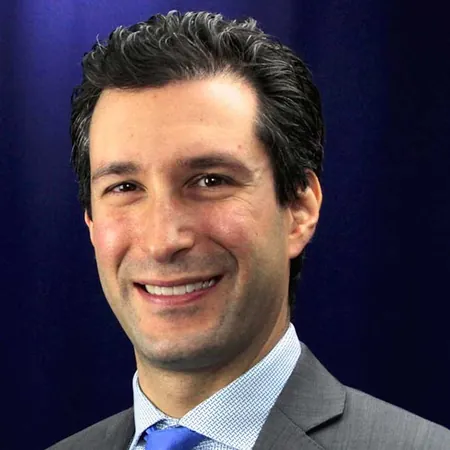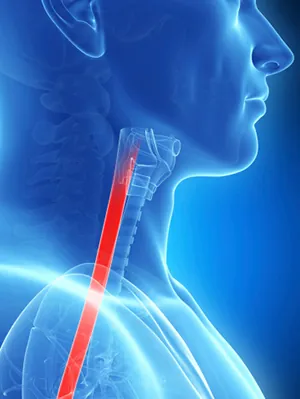
Urgent Action Required: China’s Battle Against Hepatitis B Continues
2025-04-01
Author: Daniel
China's Progress in Combating Hepatitis B
China has made impressive strides in combating mother-to-child transmission of hepatitis B, yet medical experts highlight that the country must ramp up efforts to recognize and treat millions of current cases to effectively lower related deaths.
Improvements in Infection Rates
Wang Yu, chairman of the Chinese Foundation for Hepatitis Prevention and Control, revealed at the recent 34th annual meeting of the Asian Pacific Association for the Study of the Liver that the hepatitis B surface antigen positivity rate among children under five years old dropped to approximately 0.3 percent in 2020. This is a remarkable decline from an alarming 10 percent infection rate observed in the early 1990s.
Historical Context
Historically, a significant number of infants contracted hepatitis B through maternal blood during childbirth. “Due to an extensive vaccination program initiated at birth over the last thirty years, China has successfully curtailed the transmission of the virus, leading to a dramatic reduction in positive rates among newborns and toddlers,” Wang stated.
The Need for Enhanced Measures
However, while progress has been made in preventing transmission from mothers to children, Wang estimates that around 75 million individuals in China are living with chronic hepatitis B. These cases pose a significant risk for severe complications, including chronic hepatitis, liver fibrosis, cirrhosis, and liver cancer, thus contributing a heavy disease burden on the healthcare system.
Collaboration is Key
Wang emphasized the urgency of enhancing testing and screening measures to identify individuals currently unaware of their hep B status and to implement targeted treatment plans. “Collaboration among grassroots clinics, disease control centers, hospitals, and local governments is essential for timely diagnosis and ongoing patient management,” he stressed.
Global Health Goals
The World Health Organization has set a formidable goal to eliminate viral hepatitis as a major health threat by 2030, aiming for a remarkable 90 percent reduction in new infections and a 65 percent decrease in related deaths by the end of the decade.
Regional Focus on Hepatitis B
Hepatitis B is particularly prevalent in the Asia-Pacific region, which accounts for about two-thirds of global cases. Wei Lai, the conference president and director at Beijing Tsinghua Changgung Hospital, emphasized that eliminating hepatitis B in China is crucial not just for the nation, but for the entire Asia-Pacific region’s battle against this disease.
Need for Cross-Sector Collaboration
Moreover, he called for effective cross-sector collaboration to address chronic hepatitis B management, which includes early screening and interventions, treatment for different stages of liver damage, and surgical options for liver cancer. “Most suffer from the disease after the age of 30, with a rising incidence of liver cancer, necessitating coordination between specialists in oncology, transplantation, and other relevant fields,” Wei pointed out.
Pursuing Functional Cure
A pivotal aspect discussed at the conference was the notion of achieving a 'functional cure'—successfully suppressing the viral load to undetectable levels without any signs of active infection. “This gathering serves as a constructive platform for pharmaceutical companies, regulatory authorities, clinicians, and epidemiologists to devise strategies for enhancing functional cures and improving the quality of life for those affected by hepatitis B,” he concluded.
Conclusion
As China continues to lead the fight against hepatitis B, the clock is ticking. With millions still affected, concerted action is more essential than ever to eradicate this silent epidemic. Don’t miss out on the latest efforts and breakthroughs in the battle against hepatitis B—this is a health crisis you need to stay informed about!






 Brasil (PT)
Brasil (PT)
 Canada (EN)
Canada (EN)
 Chile (ES)
Chile (ES)
 Česko (CS)
Česko (CS)
 대한민국 (KO)
대한민국 (KO)
 España (ES)
España (ES)
 France (FR)
France (FR)
 Hong Kong (EN)
Hong Kong (EN)
 Italia (IT)
Italia (IT)
 日本 (JA)
日本 (JA)
 Magyarország (HU)
Magyarország (HU)
 Norge (NO)
Norge (NO)
 Polska (PL)
Polska (PL)
 Schweiz (DE)
Schweiz (DE)
 Singapore (EN)
Singapore (EN)
 Sverige (SV)
Sverige (SV)
 Suomi (FI)
Suomi (FI)
 Türkiye (TR)
Türkiye (TR)
 الإمارات العربية المتحدة (AR)
الإمارات العربية المتحدة (AR)